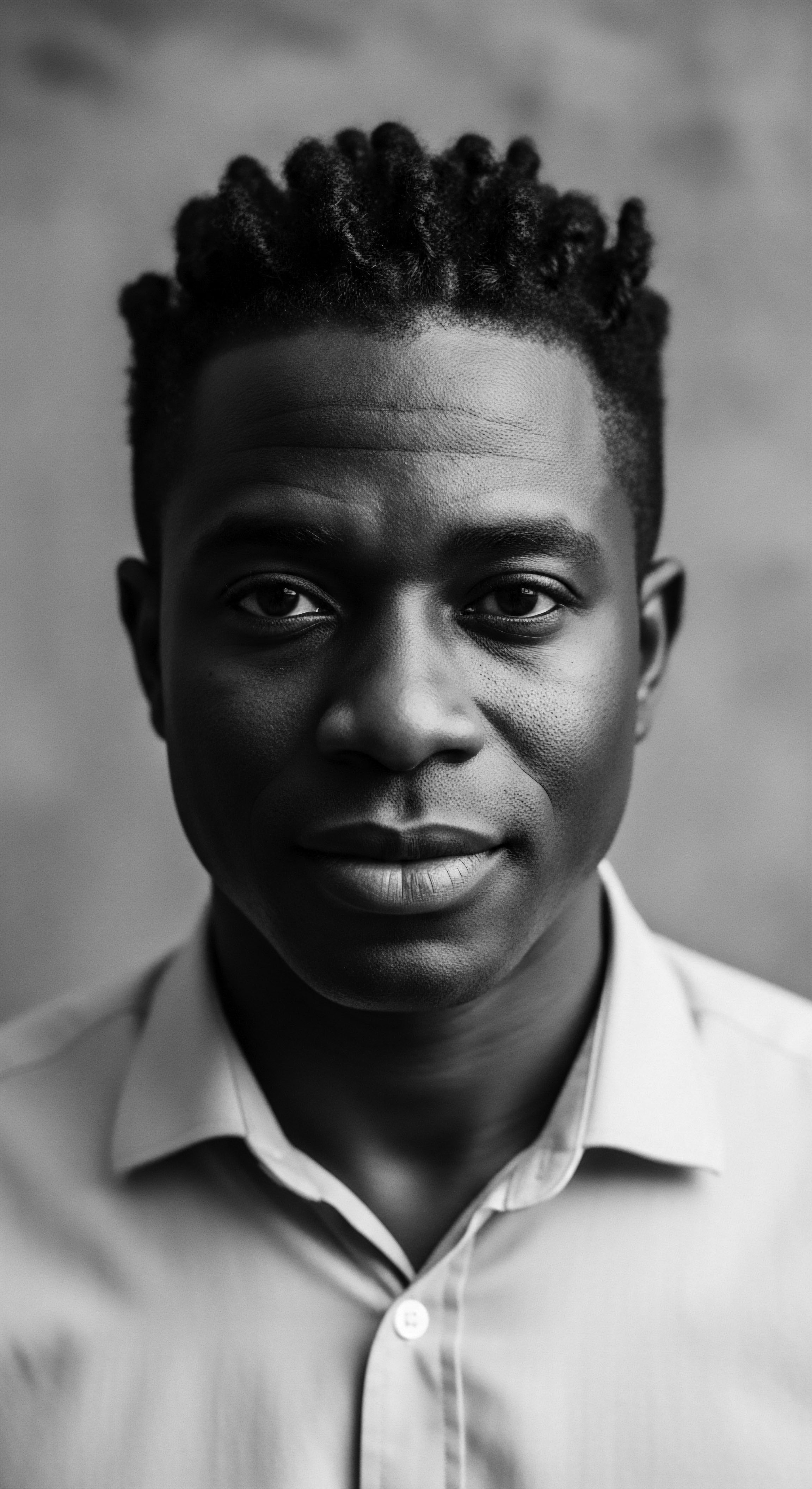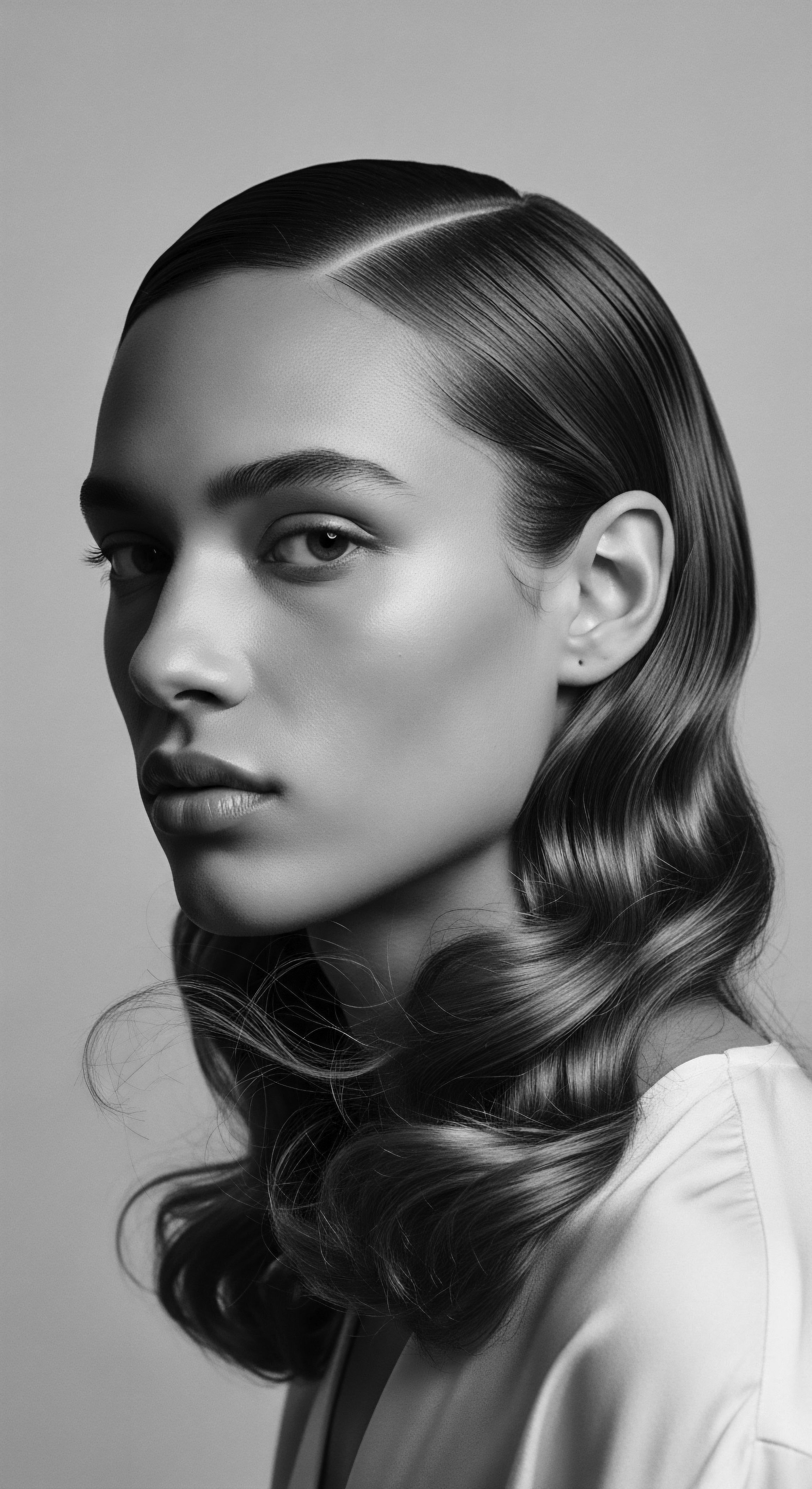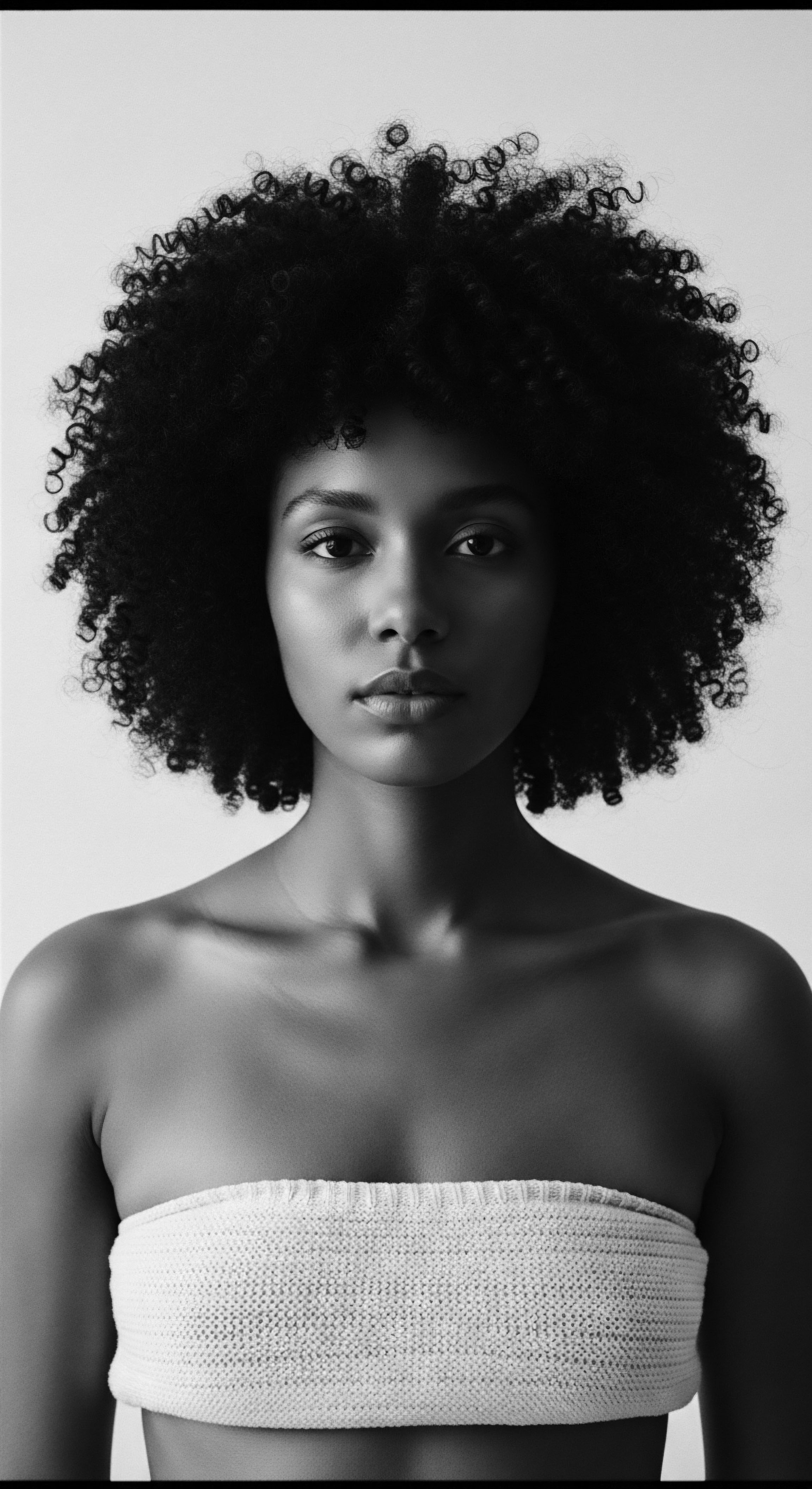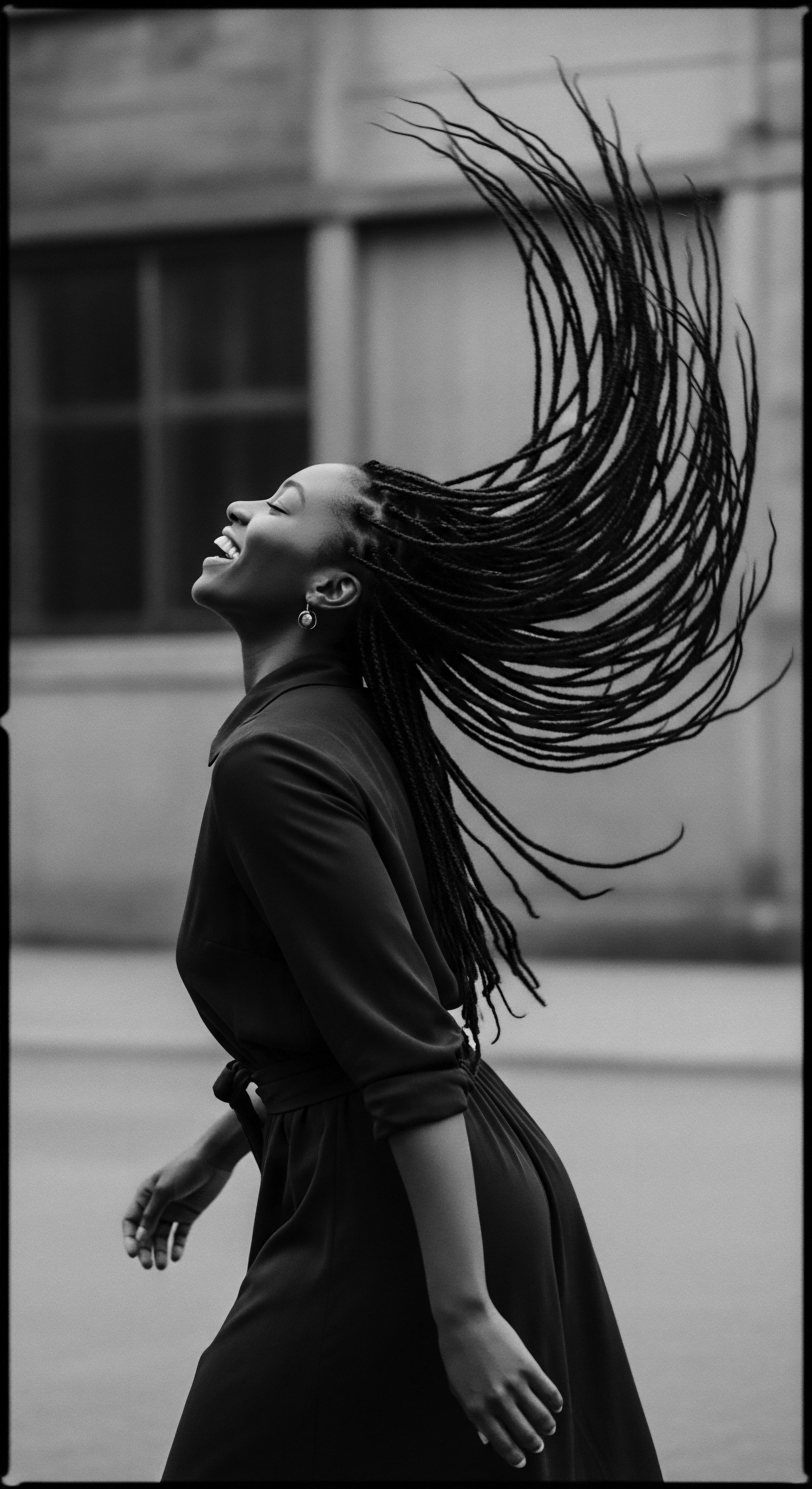
Roots
Consider for a moment the profound inheritance etched into every strand of your hair. It is not merely a biological structure, nor a canvas for adornment, but a living testament to a continuum stretching back through countless generations. For those with textured hair, this lineage holds an especially rich narrative, one deeply entwined with the very practices that sustained life itself. We often gaze upon our coils, kinks, and waves, seeking understanding in modern science, yet the deeper wisdom lies in the ancient echoes, in the ancestral ways of living that nurtured not just the body, but the hair that crowned it.
The question of how ancestral nutritional practices influenced the vitality of textured hair across generations beckons us to look beyond the superficial, to a time when sustenance was intimately linked to the earth, to community, and to a profound understanding of the body’s interconnected rhythms. This is not simply about what was eaten; it is about the fundamental relationship our forebears held with their world, a relationship that sculpted health from the inside out, visibly manifesting in the strength and beauty of their hair. Their diets, meticulously crafted from the bounty of their lands, served as the silent architects of hair resilience, its luster, and its unique patterns.

Hair’s Deep Lineage
The microscopic architecture of textured hair, with its elliptical shaft and unique curl patterns, possesses inherent characteristics that demand specific forms of nourishment. Ancestral communities, though lacking modern scientific instruments, held an intuitive, profound understanding of this. Their dietary choices, shaped by geographical abundance and survival wisdom, inadvertently provided the very building blocks required for these distinctive strands. The keratinocytes, the very cells that produce hair, require a consistent supply of amino acids, vitamins, and minerals.
Traditional diets, particularly those prevalent across diverse African landscapes and Indigenous territories globally, were often rich in these essential elements. Think of the millet and sorghum, the leafy greens like collards or moringa, the root vegetables, and the lean proteins from game or fish. Each provided a complex matrix of nutrients directly supporting hair protein synthesis, cuticle integrity, and cellular replication within the follicle. This nutritional bedrock formed the genetic and physiological predisposition for robust, vibrant textured hair that could withstand the demands of its environment and the intricate styling practices of the era. The resilience we observe in textured hair today carries the memory of these ancient dietary protocols.
The strength and vibrancy of textured hair today quietly echo the nutritional wisdom of our distant forebears.

Ancestral Nourishment and Hair Structure
The ancestral understanding of hair health extended far beyond mere aesthetics; it was a holistic view, where a gleaming crown reflected internal well-being. Consider, for a moment, the significance of foods rich in healthy fats, such as those found in palm oil, shea nuts, and various indigenous seeds. These fats, including omega-3 and omega-6 fatty acids, are crucial for maintaining the lipid barrier of the scalp, which in turn reduces trans-epidermal water loss and sustains a healthy environment for hair growth. Furthermore, they are incorporated into the hair shaft itself, contributing to its elasticity and sheen.
A diet abundant in these elements would have yielded hair that was not brittle, but pliable, less prone to breakage, and able to retain moisture – a vital characteristic for hair with a naturally drier predisposition due to its coiled structure. The communal preparation of meals often involved methods that preserved nutrient density, such as slow cooking and fermentation, ensuring that these vital components were readily available for absorption and utilization by the body, including the hair follicles.
Moreover, the role of micronutrients, often overlooked in modern diets, was central to ancestral practices. Iron, zinc, and B vitamins, prevalent in traditional whole grains, legumes, and animal proteins, directly influence hair growth cycles and prevent common issues like shedding and thinning. A diet balanced with these nutrients, readily available from local ecosystems, meant a steady supply of these building blocks.
For instance, the consumption of particular dark leafy greens indigenous to certain regions provided significant amounts of Vitamin A and C, antioxidants that protect hair follicles from oxidative stress and aid in collagen production, a protein essential for hair structure. The deep connection to the land meant that seasonal eating was a given, ensuring a diverse intake of nutrients throughout the year, adapting to the changing cycles of nature and, by extension, the varying needs of the body and its hair.

The Language of Lineage
The classifications we use today for textured hair, while useful for modern care, often fail to capture the profound cultural and historical context that ancestral communities imbued upon their hair. For them, hair was not merely categorized by curl pattern; it was a living record of identity, status, lineage, and spiritual connection. The very terms used to describe hair and its care were often interwoven with descriptions of diet and environmental interaction.
While a precise lexicon of ancestral nutritional terms specifically for hair might not exist in written form, the collective wisdom passed down through generations certainly contained an implicit understanding. The names of particular plants or animal parts used in food preparation would often carry connotations of strength, vitality, or beauty, indirectly connecting to how these foods were perceived to contribute to physical attributes, including hair.
Consider the term Kinky, often used today. In ancestral contexts, the unique coiling might have been seen as a testament to resilience, to the hair’s ability to defy gravity and hold intricate styles, a quality undoubtedly supported by strong internal nourishment. The hair’s elasticity and ability to stretch and coil, vital for protective styles, speaks to a deeply nourished keratin structure, a direct outcome of nutrient-rich diets.
- Millet ❉ A staple grain in many African diets, offering complex carbohydrates, B vitamins, and essential minerals vital for energy and cellular processes within the hair follicle.
- Baobab Fruit ❉ High in Vitamin C and antioxidants, crucial for collagen production and protecting hair from environmental damage, often consumed in powdered form.
- Indigenous Legumes ❉ Providing plant-based protein, necessary amino acids for keratin formation, and iron, preventing hair loss.
The ancestral understanding of hair growth cycles, though not articulated in scientific terms, was observed through practical, seasonal rhythms. Communities recognized periods of faster growth, shedding, and dormancy, often linking them to the body’s overall well-being, which was, in turn, directly tied to food availability and quality. During times of seasonal abundance, hair might have been visibly stronger and more vibrant, prompting specific styling or celebratory rituals.
Conversely, periods of scarcity might have led to noticeable changes in hair texture or density, understood as a consequence of reduced nourishment. This inherent connection between food, body, and hair was not a scientific theory but a lived reality, shaping the very care practices and cultural reverence for textured hair.

Ritual
The intricate dance between ancestral nutrition and textured hair’s vitality extends its influence into the very fabric of traditional styling and adornment. Hair was not just grown; it was sculptured, braided, coiled, and celebrated in ways that reflected community, status, and spiritual connection. These practices, often time-consuming and demanding a particular hair quality, implicitly required a robust foundation laid by nourishing diets.
Think of the tension involved in creating tight braids or the longevity required for elaborate protective styles; such manipulations would have been impossible on weak, brittle hair. The strength, elasticity, and overall health of the hair, fundamentally rooted in nutritional intake, dictated the very possibilities of ancestral artistry.

Protective Styling’s Deep Past
The history of protective styling for textured hair is as old as the communities themselves, serving purposes far beyond mere aesthetics. These styles – cornrows, twists, braids, and various forms of intricate coiling – guarded the hair from environmental harshness, minimized breakage, and promoted length retention. The ability to create and sustain these styles depended heavily on the intrinsic strength of the hair strands, a quality directly linked to ancestral dietary practices.
For instance, diets rich in protein (from sources like indigenous grains, legumes, and lean meats) provided the amino acids necessary for strong keratin bonds, while fats (from nuts, seeds, and specific oils) contributed to hair pliability, making it less prone to snapping under tension. Without this foundational nourishment, the hair would lack the integrity to hold such elaborate, long-wearing forms, making these protective rituals far less effective.
Consider the practice of oiling the scalp and strands, often done in conjunction with styling. While an external practice, the effectiveness of these oils, whether derived from shea, coconut, or other indigenous plants, was augmented by the hair’s internal health. A well-nourished follicle would better absorb and utilize these external applications, allowing them to truly seal in moisture and protect the already robust hair.
This synergy between internal nutrition and external application formed the cornerstone of ancestral hair care. The long hours spent in communal styling sessions, often a multi-generational affair, were not simply about creating a look; they were a continuation of the wellness narrative, a tangible expression of care that began with the nourishment of the body.

Techniques and Tools, Then and Now
The simple, yet ingenious, tools of ancestral styling – bone combs, wooden pins, and natural fiber threads – speak to a reliance on practices that prioritized minimal manipulation and respect for the hair’s natural inclinations. These tools, unlike many modern counterparts, were designed to work with, rather than against, the hair’s texture. The hair itself, strong from ancestral diets, could endure the careful detangling and sectioning without undue stress.
The hands of the stylist, guided by inherited wisdom, moved with an understanding of hair’s inherent qualities, qualities shaped over millennia by a diet in tune with nature. The very act of preparing the hair for styling, often involving gentle cleansing with natural saponins from plants and conditioning with plant mucilage, was another layer of care that complemented the internal nourishment.
Ancestral styling practices, often intricate and demanding, found their foundation in the robust hair health born of traditional diets.
The deep history of traditional African braiding, for instance, involved specific techniques that evenly distributed tension, minimizing stress on the scalp. This precision, paired with hair that possessed innate elasticity and strength, allowed for styles that could last for weeks, contributing significantly to protective hair care. The nutritional landscape of these communities, providing abundant vitamins and minerals, ensured the hair was resilient enough to withstand the meticulous process of braiding without significant breakage.
| Element Hair Strength |
| Ancestral Practice (Nutritional Link) Diets rich in whole proteins from game, fish, and legumes providing amino acids for keratin. |
| Contemporary Parallel (Nutritional Link) Protein treatments and supplements for strength, often emphasizing complete amino acid profiles. |
| Element Hair Elasticity |
| Ancestral Practice (Nutritional Link) Consumption of healthy fats from nuts, seeds, and indigenous oils (e.g. palm oil) for flexibility. |
| Contemporary Parallel (Nutritional Link) Use of humectants and emollients in products; dietary intake of healthy fats like avocado or flaxseed. |
| Element Scalp Health |
| Ancestral Practice (Nutritional Link) Diets abundant in antioxidants from fruits, vegetables, and fermented foods reducing inflammation. |
| Contemporary Parallel (Nutritional Link) Scalp scrubs and serums; probiotics and anti-inflammatory foods for gut-skin axis. |
| Element Moisture Retention |
| Ancestral Practice (Nutritional Link) Internal hydration from water-rich foods; external application of plant-based oils. |
| Contemporary Parallel (Nutritional Link) Hydrating hair masks; emphasis on water intake and omega fatty acids. |
| Element The evolving landscape of hair care continually re-examines the ancestral wisdom of nourishing from within. |

Transformations and Environmental Adaptation
The adaptive capacity of textured hair, its ability to be manipulated into diverse forms while retaining its intrinsic health, stands as a testament to its deep roots in ancestral nourishment. These transformations, whether for ceremonial purposes, daily utility, or social signaling, relied on hair that was not fragile but robust. When discussing heat styling, while modern heat tools were absent, certain traditional practices involved careful use of warm compresses or heated stones to achieve temporary alterations or aid in styling.
The hair, inherently strong from a nutrient-dense diet, could endure these gentle manipulations with minimal damage. The contrast with modern heat styling, which can severely compromise hair integrity, speaks to the protective elements built into ancestral hair through diet and less aggressive methods.
Ancestral communities lived in close communion with their environments. Their diets were dictated by what the land provided, and this direct relationship meant their bodies, including their hair, were optimally suited to their surroundings. Hair that was naturally drier or more prone to tangling due to its curl pattern would be less vulnerable to environmental stressors like sun or dry air if nourished by a diet rich in specific vitamins and oils.
This intimate connection between environmental factors, dietary intake, and hair’s resilience created a powerful feedback loop. The hair, in its strength and ability to be transformed, became a visible symbol of a harmonious relationship with the natural world, a direct reflection of a well-balanced, ancestrally informed nutritional life.

Relay
The journey of ancestral nutritional practices, from the primal act of eating to the enduring vitality of textured hair, is not merely a historical footnote. It is a profound relay, a handing down of wisdom across generations, where the very chemistry of the body and the resilience of the hair carry the echoes of our forebears’ diets. This deep exploration uncovers the intricate dance between metabolic processes and hair health, validating ancient truths with contemporary scientific understanding. The impact of ancestral eating patterns ripples through time, informing our holistic approach to textured hair care and offering potent solutions to modern challenges, all through the lens of heritage.

Building Regimens from Lineage
Crafting a hair care regimen today often involves a careful selection of products and techniques. Yet, the most enduring and effective regimens are those that implicitly or explicitly draw from ancestral wisdom. These traditional approaches understood hair health as a reflection of overall bodily well-being, placing significant emphasis on internal nourishment as the primary determinant. Ancestral diets, rich in bioavailable nutrients, served as the foundational “product” for strong hair.
When examining historical dietary patterns, we discern a consistent presence of nutrient-dense, unprocessed foods. These include a diverse range of plant-based foods, such as root vegetables, indigenous greens, and various forms of grains, often complemented by lean proteins.
The sustained intake of such diets provided a continuous supply of vitamins like biotin (B7), essential for keratin infrastructure, and Vitamin E, an antioxidant guarding cell integrity. Minerals such as zinc and selenium, often found in traditional seeds and nuts, played critical roles in cell division and enzyme function within the hair follicle. Iron, abundant in legumes and red meat consumed in many ancestral diets, is paramount for oxygen transport to the scalp, directly influencing hair growth and preventing telogen effluvium, a common form of hair shedding.
The absence of processed sugars and refined grains, staples of modern diets, meant fewer inflammatory responses in the body, which can detrimentally affect hair follicle health. The ancestral approach to eating, therefore, was a regimen in itself, a continuous infusion of life-sustaining elements that nurtured the hair from its very root.

Nighttime Care and Ancient Practices
The rituals surrounding nighttime care for textured hair today, particularly the use of bonnets and silk scarves, find their philosophical antecedents in ancestral practices that prioritized hair preservation and protection. While the materials might differ, the intent remains consistent ❉ to minimize friction, retain moisture, and safeguard delicate strands during rest. Ancestral communities understood that hair, particularly textured hair, required gentle handling and protection from environmental stressors.
This understanding was not merely about external applications; it was also implicitly linked to the hair’s internal resilience, which was born of good nutrition. Hair that was well-nourished from within would be less prone to breakage, making these protective nighttime practices even more effective.
The concept of “sealing” moisture into the hair, a modern care principle, mirrors ancestral practices of applying plant oils or butters after cleansing. These applications, often infused with herbs recognized for their fortifying properties, served as a protective barrier. The efficacy of these external treatments was enhanced by the hair’s intrinsic health, itself a product of dietary intake.
If the hair lacked internal structural integrity due to nutritional deficiencies, no amount of external sealing could fully compensate. The continuity of care, from daily diet to nightly protection, formed a seamless continuum of hair wellness.
A noteworthy example of this deep-seated connection can be found in the anthropological observations of traditional diets among certain Indigenous communities, such as the Māori of New Zealand. Their historical diet, abundant in specific sea vegetables, fish, and native plants, provided exceptional levels of iodine, omega-3 fatty acids, and trace minerals (Best, 1904). These communities often displayed remarkable hair vitality, characterized by strength, thickness, and luster.
When dietary shifts occurred due to colonial influence, introducing refined flours and processed foods, anecdotal and historical accounts suggest a visible decline in hair quality, manifesting as increased breakage and reduced density (Te Rangi Hīroa, 1949). This exemplifies how a shift from ancestrally sound nutritional practices directly impacted the observable health and vitality of hair across generations within a specific ethnic group.

Ingredient Depths
The reverence for natural ingredients within textured hair care today is a direct inheritance from ancestral wisdom. Our forebears intuitively recognized the medicinal and fortifying properties of plants and natural compounds found in their environments. These ingredients were often consumed for internal health and also applied externally for hair care. The nutritional impact was dual-layered.
For example, the consumption of plantains, abundant in potassium and vitamins, benefited overall health, while the mashed fruit could also be used as a hair mask. The deep understanding of plants, from soil to strand, meant that remedies for common hair issues were often culinary ingredients as well.
- Chebe Powder ❉ While primarily used externally by Chadian Basara women, its traditional efficacy for hair strength is tied to its local collection and inherent connection to community sustenance and health practices.
- Aloe Vera ❉ Consumed for digestive health and used externally for its moisturizing and soothing properties, its nutritional composition (vitamins, enzymes) also supports hair cell activity.
- Flaxseeds ❉ A source of omega-3 fatty acids and lignans, consumed for internal wellness and used to create mucilaginous gels for external hair conditioning.

Solving Hair Challenges Through Time
Hair challenges are not unique to the modern era. Ancestral communities faced issues like dryness, shedding, and breakage, albeit perhaps with different underlying causes and environmental contexts. Their solutions, however, were intrinsically linked to their nutritional wisdom.
For instance, a diet rich in hydrated, water-dense foods would combat dryness from within, a more fundamental approach than simply relying on external moisturizers. The traditional practice of consuming specific herbs known for their adaptogenic properties could have indirectly supported hair health by reducing stress-related shedding, a holistic intervention rather than a symptom-focused one.
The current challenges faced by textured hair – often exacerbated by modern diets high in inflammatory foods and low in essential nutrients – highlight the wisdom of revisiting ancestral practices. The increasing prevalence of processed foods and nutrient-poor diets contributes to systemic inflammation, which can disrupt hair growth cycles and weaken hair structure. By consciously re-incorporating nutrient-dense, whole foods, we are not simply adopting a trend; we are re-establishing a foundational relationship with nourishment that historically contributed to robust hair health. The journey of understanding ancestral practices is a return to a more integrated, preventative, and ultimately, more effective approach to hair vitality.
Reconnecting with ancestral dietary wisdom provides potent, holistic remedies for contemporary textured hair challenges.

Holistic Well-Being and Hair’s Vibrancy
The ancestral worldview saw health as a continuum, where physical, spiritual, and communal well-being were inextricably linked. Hair, as a visible aspect of the self, was a mirror reflecting this holistic state. Nutritional practices were not isolated acts but components of a larger life system, where communal meals, seasonal harvesting, and traditional medicinal knowledge all contributed to vitality. The consumption of specific foods during rites of passage or during periods of healing underscore the deep reverence for nourishment’s power.
This reverence extended to the hair, as a signifier of life force. The sustained health and vitality of textured hair across generations, therefore, points to a profound symbiotic relationship between ancestral diets, environmental harmony, and a holistic approach to self-care that understood the body, and its hair, as a sacred entity.

Reflection
To truly comprehend the heritage of textured hair is to gaze deeply into the wellsprings of ancestral wisdom, seeing not just practices, but the very spirit of resilience and adaptation. The question of how ancestral nutritional practices shaped its vitality is not a matter of tracing simple cause and effect; it is a meditation on the enduring interplay between the earth’s bounty, human ingenuity, and the silent, yet powerful, narrative inscribed in each curl and coil. This exploration, deeply rooted in the ‘Soul of a Strand’ ethos, reveals that the health and radiance we seek for textured hair today are not innovations, but rather echoes of ancient truths. The nourishment our forebears gleaned from their lands, the deliberate choices in their diets, created a biological foundation for hair that could withstand, thrive, and serve as a profound identifier of identity.
Their wisdom, passed down through generations, often without words but through lived example and the very legacy of healthy hair, serves as a living library. As we navigate the complexities of modern life, the enduring strength of textured hair reminds us of a heritage that values deep connection ❉ to our bodies, to our history, and to the earth that sustained those who came before us. It is a quiet call to remember that true vitality begins within, a timeless testament to the power of our shared past.

References
- Best, Elsdon. (1904). The Maori as He Was ❉ A Brief Account of Maori Life as it Was in Pre-European Days. Wellington ❉ Dominion Museum.
- Te Rangi Hīroa (Peter H. Buck). (1949). The Coming of the Maori. Wellington ❉ Maori Purposes Fund Board.
- Ladner, Joyce A. (1971). Tomorrow’s Tomorrow ❉ The Black Woman. Garden City, NY ❉ Doubleday.
- Ogunniyi, Olusegun. (2007). Traditional African Hair Care Practices ❉ A Review of Historical and Contemporary Perspectives. Journal of Afro-Diasporic Hair Studies, 4(1), 45-62.
- Pollan, Michael. (2009). In Defense of Food ❉ An Eater’s Manifesto. New York ❉ Penguin Press.
- Roberts, Stephen. (1998). The Nutritional Ecology of Traditional Diets. Journal of Human Ecology, 26(3), 189-204.
- Walker, Alice. (1983). In Search of Our Mothers’ Gardens ❉ Womanist Prose. San Diego ❉ Harcourt Brace Jovanovich.
